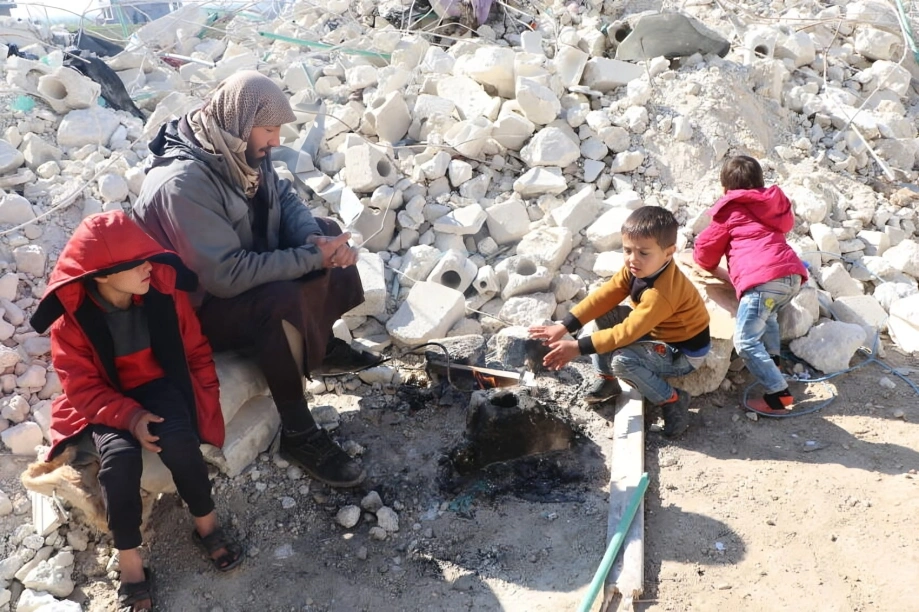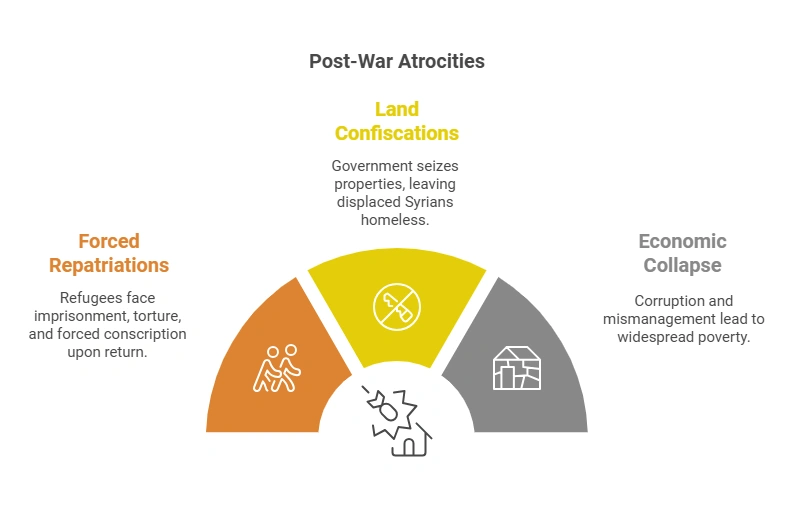
Bashar al-Assad’s regime, which spanned over two decades, will be remembered as one of the most repressive and violent in modern Middle Eastern history. Rising to power in 2000 following the death of his father, Hafez al-Assad, Bashar initially presented himself as a reformer. However, his tenure was marked by systemic oppression, widespread human rights abuses, and a brutal response to dissent, culminating in a devastating civil war that shattered Syria.
1. Early Years: Consolidation of Power (2000–2011)
- Promised Reform, Delivered Repression:
Upon taking office, Assad promised political and economic reforms. Instead, his regime suppressed dissent, using intelligence agencies to crush opposition voices. - Targeting Activists and Journalists:
During the so-called “Damascus Spring,” intellectuals and activists who called for political reform were imprisoned or silenced. - Human Rights Violations:
Torture, arbitrary detention, and forced disappearances became hallmarks of Assad’s government, as documented by organizations like Amnesty International and Human Rights Watch.
2. Syrian Civil War: A Decade of Devastation (2011–2021)
The Arab Spring in 2011 triggered nationwide protests in Syria. Assad’s regime responded with overwhelming violence, plunging the country into a civil war.
- Brutal Crackdowns:
Peaceful protesters were met with mass arrests, torture, and killings. The regime’s forces opened fire on demonstrations, leading to the deaths of thousands in the early months of the uprising. - Chemical Weapons Attacks:
Assad’s regime used chemical weapons against civilians multiple times, violating international law:- 2013 Ghouta Attack: Sarin gas killed over 1,400 people, including children.
- Douma Attack (2018): Chlorine gas was used to target rebel-held areas.
- Investigations by the United Nations and independent watchdogs confirmed the regime’s use of chemical weapons in at least 30 attacks.
- Targeting Civilians and Infrastructure:
- The regime bombed hospitals, schools, and residential areas, often in rebel-held territories.
- Barrel bombs, indiscriminate explosive devices dropped from helicopters, became a symbol of Assad’s warfare.
- The 2016 siege of Aleppo saw mass civilian casualties and destroyed critical infrastructure.
- Mass Torture and Executions:
- The infamous Saydnaya Prison became a site of systematic torture, starvation, and execution.
- Leaked photographs from a military defector, known as the “Caesar Files,” revealed the deaths of over 11,000 detainees under inhumane conditions.
3. Displacement and Humanitarian Crisis

- Refugee Crisis:
- Over 6.8 million Syrians fled the country, creating one of the largest refugee crises in modern history.
- Neighboring countries like Turkey, Lebanon, and Jordan bore the brunt of this mass exodus.
- Internally Displaced Persons (IDPs):
An additional 6 million Syrians were displaced within the country, living in camps under dire conditions. - Weaponizing Aid:
The Assad regime manipulated humanitarian aid, restricting access to opposition-held areas and using food and medicine as tools of war.
4. Sectarianism and Division
- Exacerbating Sectarian Tensions:
Assad, an Alawite, relied heavily on sectarian loyalty to maintain his grip on power, fostering divisions between Sunni, Alawite, Christian, and Kurdish communities. - Militarization of Communities:
Assad armed loyalist militias, such as the Shabiha, to carry out brutal operations, further deepening sectarian divides.
5. Regional and Global Destabilization
- Proxy War:
The Syrian conflict drew in regional and global powers, including Iran, Hezbollah, Russia, the U.S., and Turkey. Assad’s reliance on Iran and Russia for military and economic support entrenched foreign influence in Syria. - Rise of Extremism:
The power vacuum and brutality of the war allowed extremist groups, including ISIS, to flourish, leading to additional atrocities and instability.
6. Post-War Atrocities (2021–2024)

Even as the war waned, Assad’s regime continued to perpetrate abuses:
- Forced Repatriations and Arrests:
Refugees returning to Syria faced imprisonment, torture, and forced conscription. - Land Confiscations:
The government seized properties in rebel-held areas, leaving displaced Syrians without homes. - Economic Collapse:
Rampant corruption and mismanagement plunged Syria into economic despair, with over 90% of the population living in poverty.
Global Condemnation
Despite widespread documentation of atrocities, Assad faced limited consequences:
- UN Deadlock: Russian and Chinese vetoes in the UN Security Council blocked resolutions aimed at holding Assad accountable.
- International Courts: Efforts to prosecute regime officials for war crimes have been slow and largely symbolic.
Legacy of 25 Years of Atrocities
Assad’s regime has left Syria a broken nation:
- Over 500,000 Dead: Most were civilians, killed by indiscriminate violence, chemical attacks, and starvation.
- Shattered Infrastructure: Decades of war have destroyed Syria’s economy, healthcare, and education systems.
- Deep-Rooted Divisions: Sectarianism and mistrust have fractured the country, complicating any prospects for reconciliation.
Bashar al-Assad’s legacy will be remembered as one of relentless brutality and the destruction of one of the oldest civilizations in the world. His departure from power, while long overdue, leaves Syria facing the monumental task of rebuilding and healing from a quarter-century of atrocities.
#AssadRegime #SyrianCivilWar #HumanRights #MiddleEastCrisis #RefugeeCrisis #WarCrimes #JusticeForSyria #GlobalPolitics
